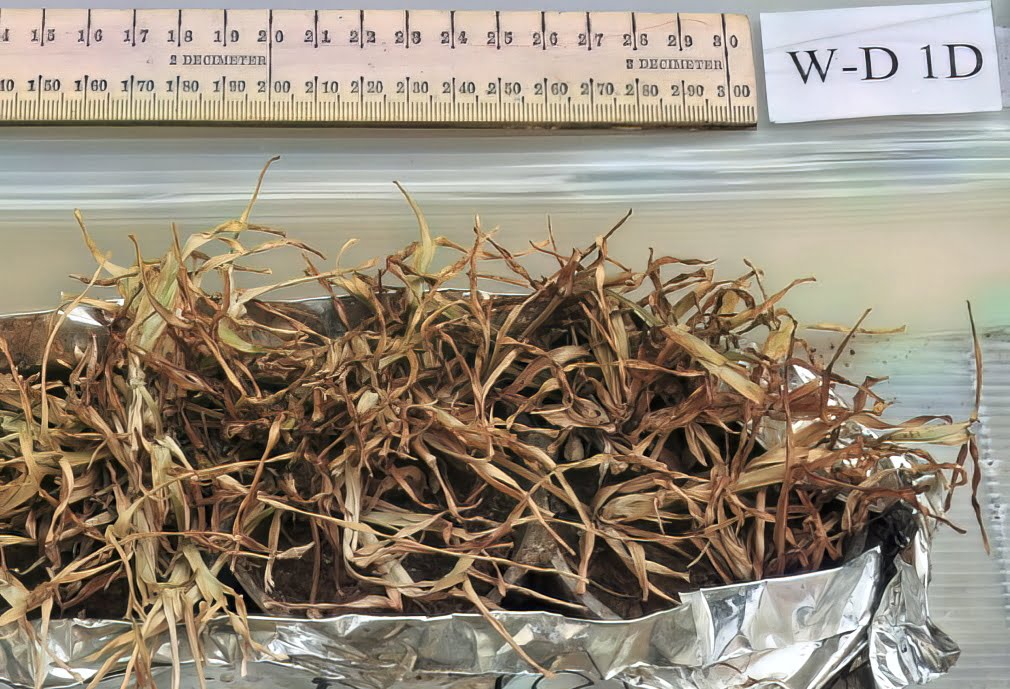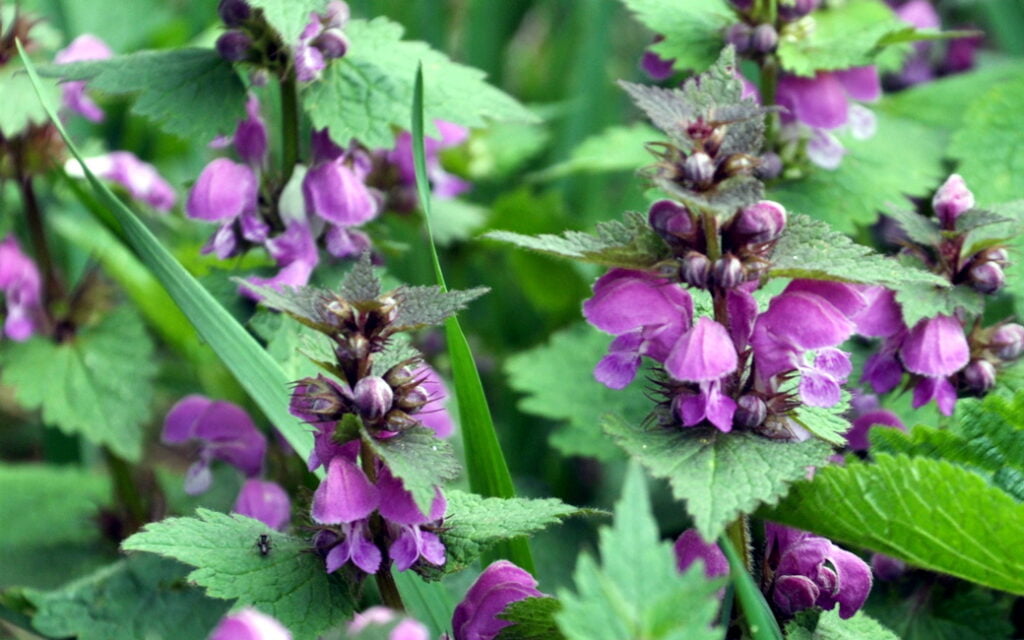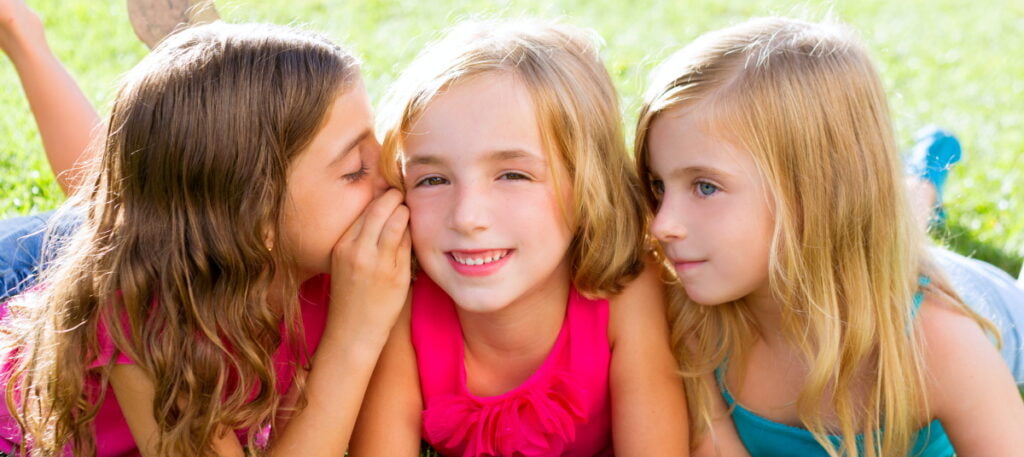There’s a kids’ game in which a line of players whisper a word or a phrase to their neighbor.
It’s called Broken Telephone in the US, or Chinese Whispers in the UK. The winner is the first team to accurately transmit the message all the way along the line.
Plants do the same thing. They have no brain but are still able to pass on messages to each other.

They can, for example, perceive warning cues from neighboring plants that are experiencing a water shortage.
They respond by closing the pores in their leaves and preparing for drought.
Professor Ariel Novoplansky, who has been researching talking plants at Israel’s Ben Gurion University of the Negev, says it shouldn’t come as a surprise.
“Any living creature emits and perceives a lot of information from the environment,” he says.
Put a houseplant in a dark corner and it will in many cases, tilt towards the window. It compares light levels from different directions and actually decides where to find sunshine.

But Prof. Novoplansky says plants do more than simply receiving and responding to what they perceive.
They emit “messages” – chemicals from their roots – that can be sensed by their neighbors, either as a “deliberate” act by the first plant, or an act of “eavesdropping” by the second.
He and his colleagues set up a row of five plants – Augustine grass or stenotaphrum secundatum – in individual pots. Each plant had all but two of its roots removed.
They were arranged so that each plant had one root in its own pot, and one in its neighbor’s, like a line of children all holding hands.
They then played the phone/whispers game mentioned earlier. They starved one of the roots of the first plant of water, but carried on watering the others.
They wanted to see if, somehow, the first plant would convey the drought warning to plant number two (which was still being watered).
And if plant number two would pass the message on to plant number three (also still being watered) and so on. They did. The first neighbor responded within a few minutes, and the message took less than an hour to reach plant number five.
Every plant along the line got the message and responded by closing their pores.
“The plant is not sensing any drought, but it senses that its neighbor is sensing drought,” says Prof. Novoplansky.
“So, the neighbor is suffering from drought, but the broadcasting of information from the roots of the stressed neighbor is affecting the unstressed neighbor.
“If my neighbor is suffering right now, I just might be suffering from the same drought tomorrow morning.
“A drought-stricken plant is releasing meaningful information. We could later demonstrate that it is a chemical cue which is being exuded from the roots and sensed by the roots of the neighbor.”
He’s almost certain that the plants release a stress hormone through its roots that can be perceived by the neighbors.
So far, so amazing. But there’s more. Plants don’t just talk. They also remember and plan ahead. They are conditioned by their past, and that affects future decisions.
Sign up for our free weekly newsletter
SubscribeIt is all part of a general phenomenon called phenotypic plasticity, says Prof. Novoplansky.

That means genetically identical plants can respond in different ways depending on their precise, immediate environment and past experiences.
“To perceive and anticipate the future, you don’t need a brain, all you need is a system that can compare different options and store variable states, which is what plants have,” says Prof. Novoplansky.
They may be simple brainless organisms, but they can still plan ahead, assessing future threats to their supply of sunlight.
Many plants can sense whether they expect to experience light competition with their neighbors long before they actually experience any shade.
They can distinguish between direct sunlight and light that’s been filtered through or reflected from plant canopy.
Based on that information they will decide where they need to grow to seek maximum sunlight.
The plant also recognizes that responding to overwhelming or unbeatable challenges, such as a high man-made building or an extremely tall tree, will be a waste of precious resources and time.
Equally they don’t expend their efforts on a much smaller rival. They choose their battles, and only take on similar-sized competitors.
“This is a very important logical aspect in evolution by natural selection,” says Prof. Novoplansky.
A plant will only fight for light if it needs to, and if it’s a winnable fight. That decision can be affected by the plant’s evolutionary past and developmental background and history .
If it’s a sun-loving plant, that is evolutionarily accustomed to open habitats, where it is expected to compete for light with similarly-sized neighbors, it will respond very aggressively to the presence of neighbors, long before it is shaded by them.
By contrast, a plant that is used to being shaded by a much taller tree would forego fighting it for light.
A plant’s ability to sense its neighbors can be critically important. That’s one of the topics of Prof. Novoplansky’s current work.
He’s researching the dead-nettle, so named because it looks like a nettle but doesn’t sting.

It has two types of flowers – big, open, attractive and nectar-rewarding expensive flowers that attract pollinator insects.
And tiny, unattractive closed flowers that don’t offer nectar but can self-pollinate. Such “cheap” flowers are good if the plants are growing under poor conditions or when pollinator insects are scarce.
They can determine the ratio between large open regular flowers and small closed, self-pollinating ones (cheaper, but with the drawbacks of in-breeding).
“Our study shows that dead-nettles can change the proportion of open flowers according to the presence of potential reproductive partners,” says Prof. Novoplansky.
“While opening expensive flowers could be worthwhile when the probability of pollination by pollen from other plants is high, self-pollination would be a sensible frugal option when no reproductive partners are available.”
Related posts

Israeli Medical Technologies That Could Change The World

Harnessing Our Own Bodies For Side Effect-Free Weight Loss

Missing Protein Could Unlock Treatment For Aggressive Lung Cancer




Facebook comments